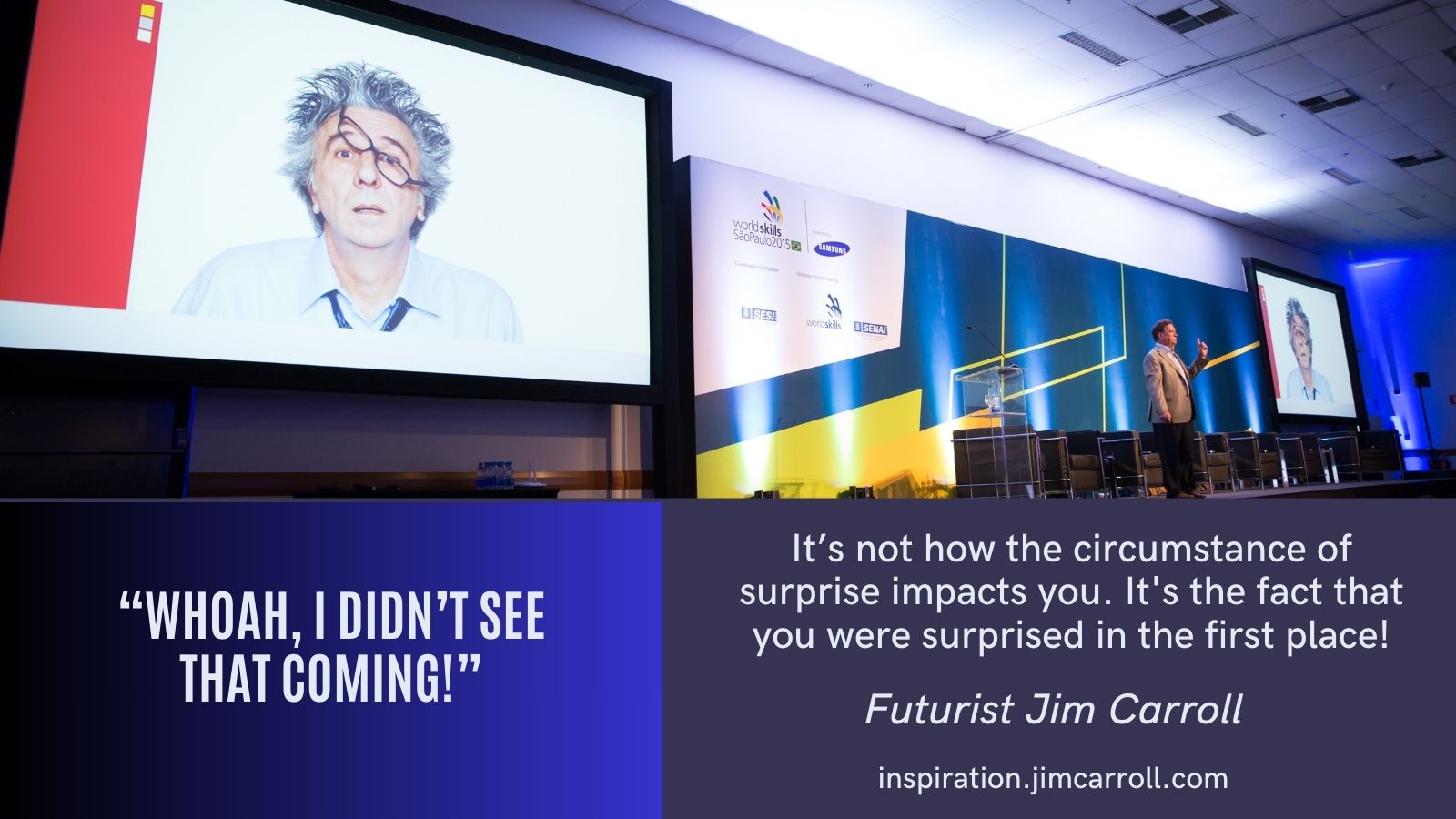“It’s not how the circumstance of surprise impacts you. It’s the fact that you were surprised in the first place!” – Futurist Jim Carroll

“I didn’t see that coming!” “Wow, that came right out of left field!” “That caught me off guard!” “I wasn’t prepared for that!” “I was taken aback by what happened!” “I was blindsided by it!”
When aligning to tomorrow, phrases such as these are indicative of perhaps the worst kind of failure, and yet often, can be the most prevalent.
Why are people blindsided by what to so many of us are obvious future trends? A few years back, I ran into my good friend Jim Harris at an airport; he’s the author of a book by that very name. We operate in small circles in this weird industry of innovation-oriented keynote speakers, and between Jim and I, we now share 60 years of on-stage keynotes! That’s a LOT of stage time. Over the years, we’ve competed in relatively few numbers of events; we’ve appeared together a couple of times; we share many of the same bureaus and agents. We met just around this type in 1993 at an event for one of our first speaker bureau partners, Canada’s National Speakers Bureau, with the now CEO Theresa Beenken.

The book’s blurb features the wonderful key line: “Solve problems before they happen.” It then notes that it will “present a series of breakthrough techniques to help business leaders identify trends earlier and more accurately predict their impact.” Not only that, it hits the key point: “Every executive dreads being blindsided; with this tool, leaders will learn to stay one step ahead of the game.” Published 21 years ago, the many examples used are likely out of date, but the guidance is timeless.

Blindsided. Isn’t avoiding that issue the whole goal of all innovation and future-oriented experts everywhere? We are always busy trying to tell you what comes next, and what to do about it, We share with you the obvious trends that are shaping and changing our world – note the use of the word ‘obvious.’ We give you practical insight into the trends that matter and battle-tested action plans that will guide you through. And yet, we continue to watch countless executives and countless numbers of organizations continue to sleepwalk their way into the future. “Whoah! I didn’t see that coming!” doesn’t just indicate a lack of insight; it’s indicative of the worst type of leadership failure.
I’ve seen it in the energy industry, where people have been shocked by the rapid plunge in the cost of solar energy generation. I’ve seen it throughout the transportation sector where people have not fully appreciated that the move to electric vehicles is well underway and will be permanent. I’ve witnessed it with retailers who always believed that the idea of shopping online would just be a flash in the pan, a momentary fad. I’ve seen it with so many companies and so many leadership teams in so many industries that it boggles my mind.
Why are people blindsided, despite the abundance of available information? Some people chase down information that confirms their pre-existing beliefs – they are doomed by their cognitive bias. In other cases, they simply overlook important trends or underestimate their impact. Others are subject to the dread-disease of misinformation and conspiracy think; others just simply refuse to accept reality. And obviously, political bias and political leanings play a crucial role.
All of this goes to my key point that in this world, there are 3 types of people – those who watch things happen. Those who make things happen. And those, who sit back after some significant change, and react, “Whoah, how did that happen?”
Be the second type of person – be aware, tune in, and turn on. It makes a difference.




GET IN TOUCH
Jim's Facebook page
You'll find Jim's latest videos on Youtube
Mastodon. What's on Jim's mind? Check his feed!
LinkedIn - reach out to Jim for a professional connection!
Flickr! Get inspired! A massive archive of all of Jim's daily inspirational quotes!
Instagram - the home for Jim's motivational mind!